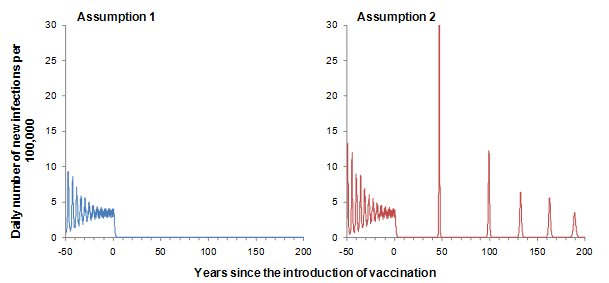How do models deal with contact patterns?
Contact patterns in the population greatly influence the transmission of infections, and many interventions, such as vaccination or school closures during an influenza pandemic, are targeted at children. To make accurate predictions of the impact of such interventions, models need to make accurate assumptions about age-dependent contact patterns.
This chapter begins with a review of the evidence for age-dependent mixing. It goes on to describe the methods for incorporating age-dependent contact into models and illustrates how contact patterns influence the impact of control. It finishes by describing the methods for calculating reproduction number taking account of age-dependent contact, and how these can be used to predict the impact of interventions. The chapter draws on examples for several infections, including varicella, measles, rubella and tuberculosis.

Predictions of the impact of the introduction of infant rubella vaccination in year 0 on the subsequent incidence of rubella.
In both instances, the same level of vaccine coverage is assumed but the amount of contact between various subgroups in the model differ resulting in very different infection dynamics.
